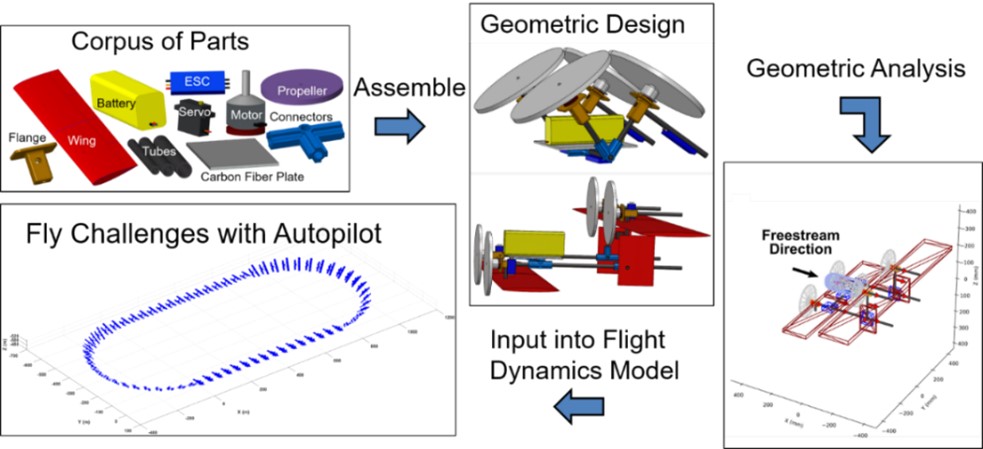Background
In response to DARPA’s Symbiotic Design for Cyber Physical Systems goals, SwRI developed a design-focused simulation toolchain for the rapid virtual design of electric/hybrid powered aircraft, capable of vertical takeoff and landing (VTOL). SwRI created a collection of parts, including batteries, motors, propellers, wings, and body parts that are commercially available and a flight dynamics modeling environment to assess performance of the aircraft assembled from those parts. This work aims to verify and provide evidence that the simulation is realistic and accurate.
Approach
Our approach is to use our existing parts corpus and simulation toolchain to create digital unmanned aerial vehicles (UAVs), which will be compared to their physical equivalents in both form and performance. The digital/physical comparison will be performed at the component and system level, including experimental testing using an institute-owned wind tunnel. The goal is to determine if manufacturer provided performance data, coupled with the computation simplifications within our aircraft property calculations and flight dynamics model, will cause component-level or system-level deviations in performance

Figure 1: Previously developed virtual design, assembly and simulation toolchain.
Accomplishments
In the first quarter, the wind tunnel has been restored and a new model mounting system has been designed. All of the parts, sensor, and equipment has been identified and received for testing purposes, including two commercially available fixed-wing UAVs. In the following quarter, it is expected to complete the experimental test campaign. The commercially available UAVs are being carefully modeled and incorporated into the toolchain. Once this is completed, simulations can begin for a specified flight path. Hobby-grade battery pack testing has been completed and has indicated some supplier specification claims are exaggerated. We plan to use this information to better represent battery performance in our flight dynamics model.
